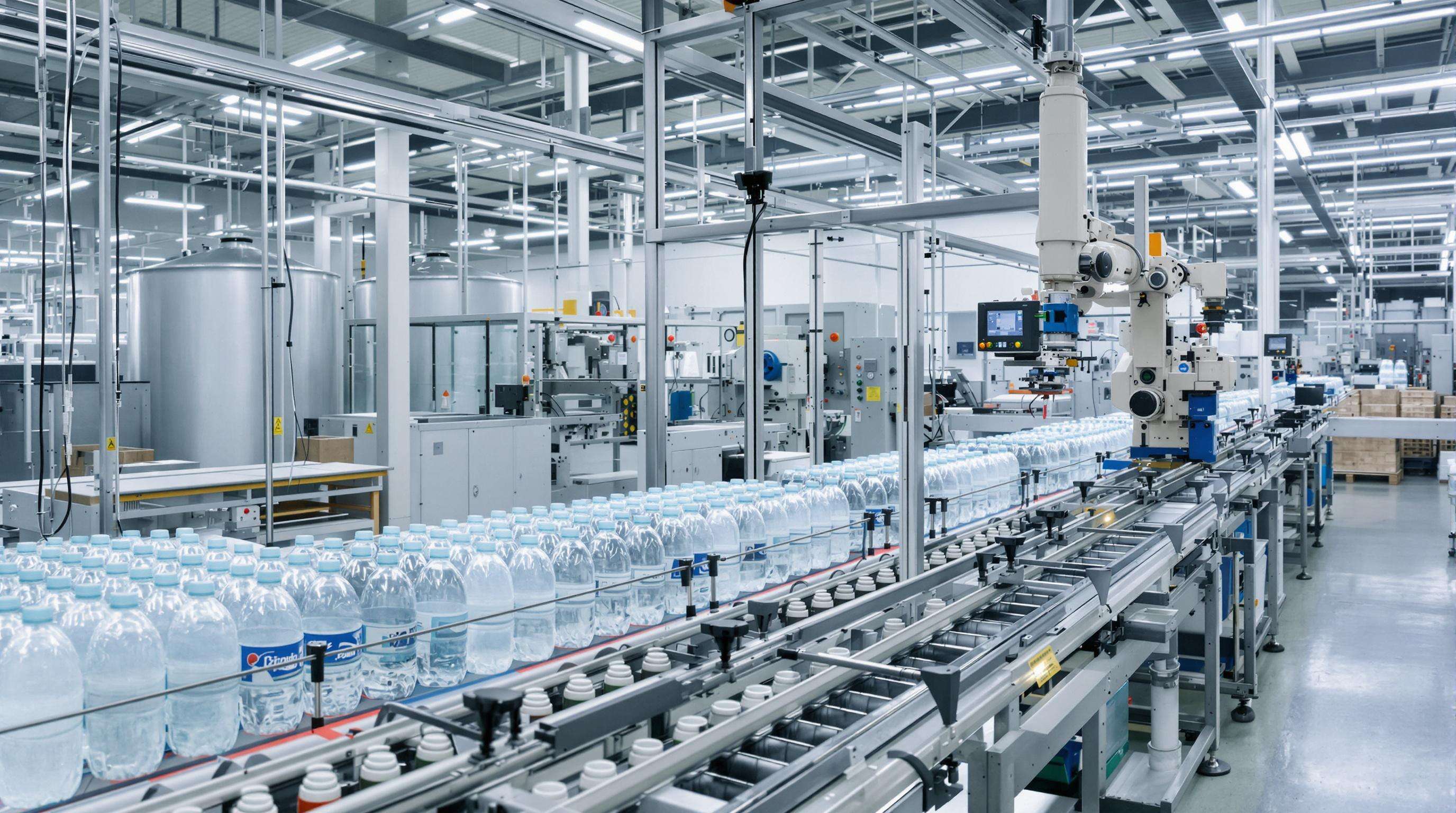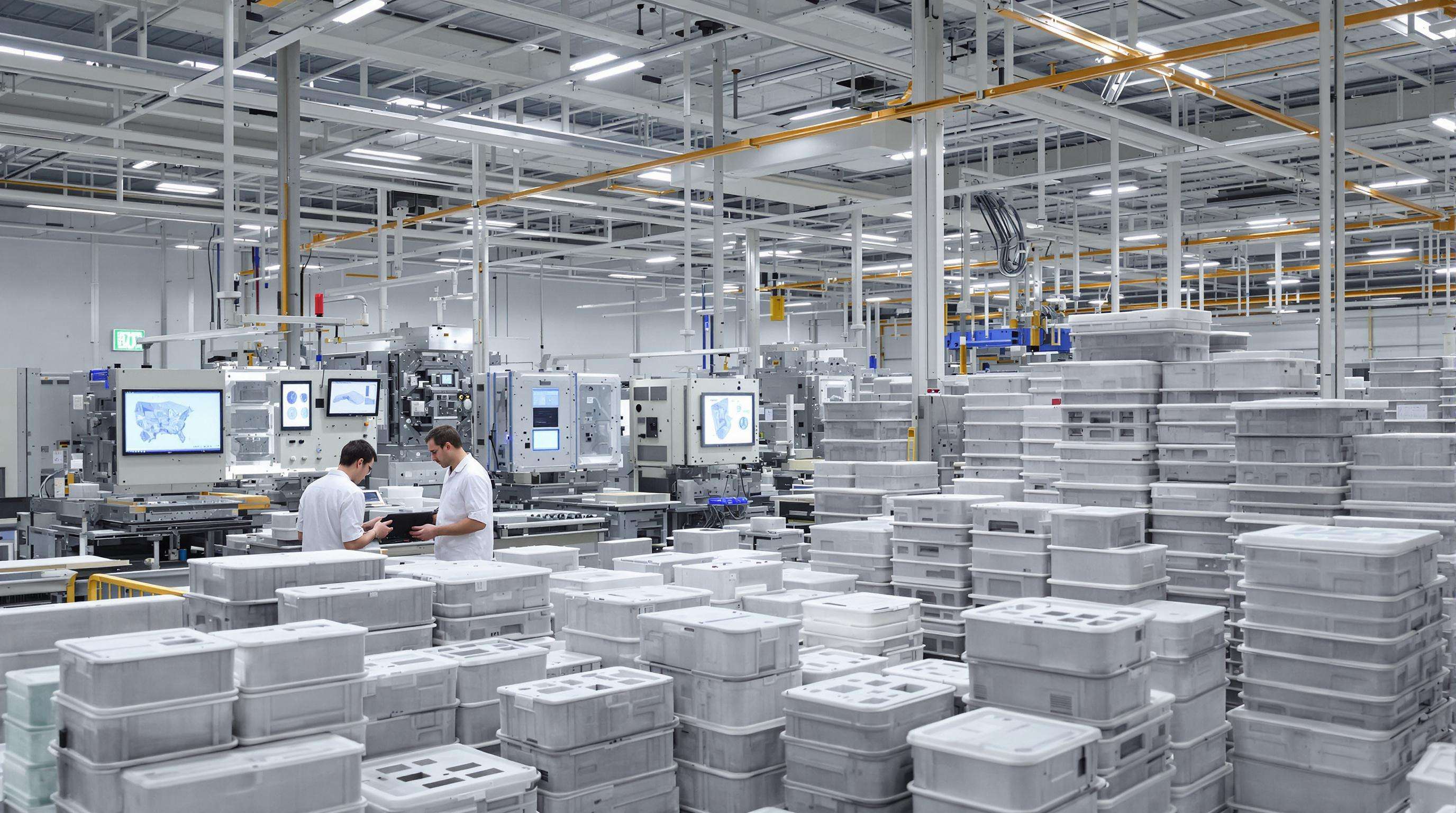Blow molding stands out as a custom manufacturing approach for creating hollow plastic parts with exact shapes and dimensions. Industries across the board, from food packaging to car parts manufacturing, rely on this process because it offers flexibility in how products are made. Standard production techniques just don't cut it when companies need to tweak things like mold designs, adjust wall thicknesses, or pick different types of plastics based on what their application demands. Around three quarters of all large scale plastic part production happens through blow molding methods since they manage to strike that sweet spot between strength and efficient material usage. Take HDPE containers for instance these days manufacturers report about 30 percent better impact resistance when using blow molded HDPE over traditional injection molded versions according to recent findings published in Plastics Today last year.
Personalized packaging and branded containers have been pushing up demand for custom blow molding at around 25% per year since 2021 according to PMMI data from last year. Recent market research shows that over half (about 63%) of all beverage manufacturers are now turning to custom molds as a way to stand out on store shelves. They're adding things like comfortable grips, materials that resist fading under sunlight, and even logos pressed directly into the surface. The same push for customization isn't just limited to drinks either. Pharmaceutical companies need special tooling for containers that show if someone has tampered with them and can withstand sterilization processes. Meanwhile in cars, manufacturers are using blow molding techniques to create fuel tanks with built-in baffles inside. These new designs cut down on fuel sloshing during driving by roughly 40%, something SAE International confirmed in their 2024 report on automotive innovations.
The latest parison control tech lets manufacturers ramp up custom designs without losing track of those fine details. What these systems do is pretty cool actually they tweak how resin gets distributed throughout the molding process. This cuts down on wasted materials somewhere around 18%, all while keeping dimensions within about half a millimeter tolerance according to Plastics Technology from last year. Take PET bottles made through stretch blow molding as an example. They end up being roughly 20% lighter compared to their glass counterparts, which matters a lot when factories are cranking out tens of millions of units each year. Then there's automated mold changing equipment that really speeds things along. Production lines experience about 55% less downtime when switching between different products. That's huge for businesses juggling fifty or more stock keeping units at once. Automation World covered this back in 2023.

Three primary factors drive cost efficiency in custom blow-molding production:
Looking at different ways to make hollow products, blow molding stands out as a real money saver when dealing with big orders. According to a recent industry report from 2023, companies can expect their costs per item to drop between 15 and 30 percent compared to injection molding once they hit around 50 thousand units in production. The savings get even better as walls get thinner since materials account for about 8 to 15 percent less expense. Cycle times are another plus point for blow molding at roughly 45 to 60 seconds versus the 90 to 120 second wait time needed for injection molding processes. And let's not forget about tooling costs either. Extrusion blow molds typically run anywhere from 40 to 60 percent cheaper than those fancy multi cavity injection molds most manufacturers rely on.
While industrial blow-molding machines require substantial upfront investment ($500k–$2M depending on capacity), manufacturers typically achieve breakeven within 18–36 months when producing at scale. Key ROI drivers include:
| Cost Factor | Initial Investment | Long-Term Savings |
|---|---|---|
| 500-ton Machinery | $740k | $1.2M/year |
| Custom Mold Tooling | $85k | 22% waste reduction |
| Automation Systems | $150k | 35% labor cost decrease |
High-performance polyethylene (HDPE) and PET equipment maintains operational efficiency for 8–12 years, making blow molding particularly viable for sustained large-scale production demands.

Custom blow molding connects artistic designs with mass production possibilities thanks to improvements in modular tools and better understanding of materials. According to a recent study from AMT, the Association for Manufacturing Technology, companies can cut their cost per item down by about 22 percent as they move from small test runs to large orders over 50 thousand units. This happens mainly because manufacturers make repeated changes to molds and run computer models to see how resins will flow during actual production. The process generally follows several main steps:
One major drink company managed to speed up their production cycles by around 40% when they started using multi cavity molds along with those fancy servo electric parison controls for their custom HDPE containers. Back in 2022, this initiative cut down on material waste at about 1.7 cents per unit thanks to some smart wall thickness optimization stuff they implemented. As a result, they were able to crank out roughly 15 million 2 liter bottles each year without any issues meeting the ISO 9001 2015 standards. And get this the post molding process got fully automated too which slashed labor costs related to manual handling by nearly two thirds compared to how things used to be done traditionally. Pretty impressive numbers if you ask me.
Modern blow-molding facilities now integrate robotic trimming systems with real-time vision inspection, reducing human intervention by 78% in high-volume operations (Plastics Today 2023 Survey). IoT-enabled hydraulic pressure monitors cut energy waste by 15% in extrusion blow molding, while AI-driven defect detection improves first-pass yield rates to 98.2% across automotive fuel tank production lines.
Blow molding equipment these days comes packed with artificial intelligence features that cut down on staffing expenses and basically eliminate human mistakes. Sensors constantly watch over things like heat levels and air pressure throughout the manufacturing process, which means factories waste around 30% less raw material than they did when workers had to monitor everything manually. Some of the newer models can actually figure out when maintenance is needed before breakdowns happen, so companies see about 40% fewer production stoppages. And despite all this tech, these machines still crank out parts at impressive rates, hitting around 2,500 pieces every hour straight through. For businesses making specialized molded products, especially those with tricky shapes or intricate designs, this kind of smart automation makes scaling production much easier without compromising quality standards.
Stretch blow molding or SBM is basically everywhere in the world of thin walled containers these days. It manages to cut down PET bottle weights by around 15 to 20 percent without compromising how strong they are when pressure builds up. What makes this possible? Well, during the biaxial stretching part of the process, those long chain molecules in the plastic actually line up in a way that gives the finished product extra strength. This matters a lot for things like fuel tanks which need to handle over 150 pounds per square inch of pressure. According to research published last year in the packaging industry, companies switching to SBM save about three cents per unit on materials versus regular blow molding techniques. That might not sound like much until you consider what it means for big beverage companies cranking out tens of millions of bottles every single year.
| Factor | Extrusion Blow Molding (EBM) | Injection Blow Molding (IBM) |
|---|---|---|
| Optimal Volume | 10K–5M units/year | 50K–20M units/year |
| Wall Consistency | ±0.15mm tolerance | ±0.05mm tolerance |
| Tooling Cost | $8K–$25K (simple geometries) | $30K–$80K (high-precision molds) |
EBM excels in prototyping and mid-volume runs of hollow parts like drums, while IBM’s closed-mold process ensures pharmaceutical-grade consistency for syringe bodies. Manufacturers adopting hybrid systems report 22% faster ROI when pairing EBM flexibility with IBM repeatability (Packaging Digest 2023).
Custom blow-molding production relies on strategic material selection and machinery optimization to balance durability, cost, and manufacturing efficiency. Industry data shows resin choices account for 35–45% of total production costs in high-volume operations, making polymer selection critical for both performance and budget management.
Hollow parts get made mostly from high density polyethylene or HDPE because it stands up well against chemicals and can be recycled multiple times. Around two thirds of all those big industrial containers out there are actually made with this stuff. When it comes to drinks packaging though, PET still rules the roost. The clarity factor is pretty important here, and PET gives about 25 percent better visibility through the container walls compared to what else is available on the market right now. There's also been some buzz lately about these new bio based resins coming into play. Early adopters report their carbon footprint drops somewhere around 30% when switching from regular old plastic materials. A recent study published last year backs up much of this claim but we'll need to see how things develop over time as adoption rates increase across different sectors.
Modern systems prioritize energy recovery mechanisms that reuse 15–20% of process heat, cutting power consumption by 800 kWh/month in continuous operations. Key advancements include:
While advanced machines require 20–30% higher initial investments, their 10-year operational costs prove 18% lower than entry-level models. Regular maintenance extends equipment lifespan by 5–8 years, with automated diagnostic systems preventing 90% of unplanned downtime in optimized facilities.
Custom blow-molding production is used for creating hollow plastic parts with specific shapes and dimensions, useful across various industries, from food packaging to automotive components.
Blow molding can result in significant cost savings for large production runs, with lower material and tooling costs compared to injection molding, and shorter cycle times.
The primary materials used in blow molding typically include HDPE and PET, chosen for their durability and cost-efficiency.
Automation enhances production efficiency, reduces waste, and decreases manual labor costs, facilitating faster and more consistent output.
 Hot News
Hot News2024-10-29
2024-09-02
2024-09-02

Copyright © 2024 Changzhou Pengheng Auto parts Co., LTD